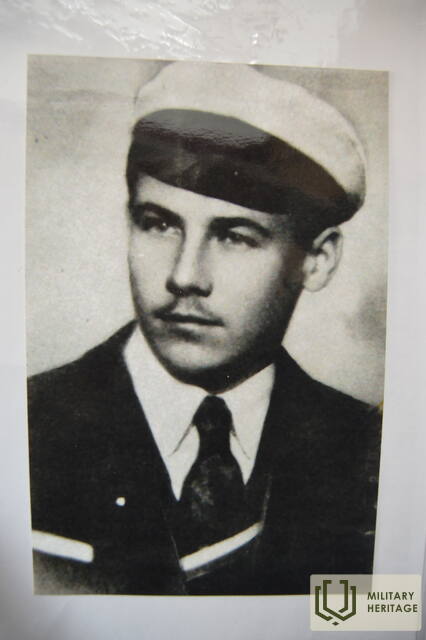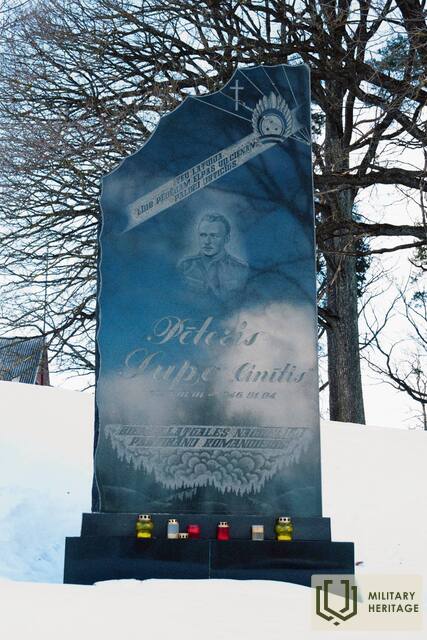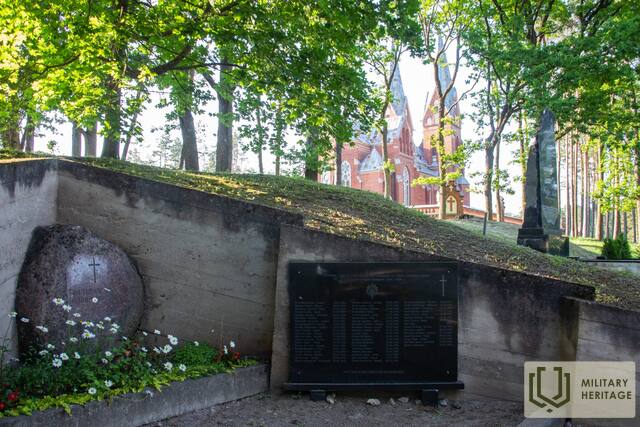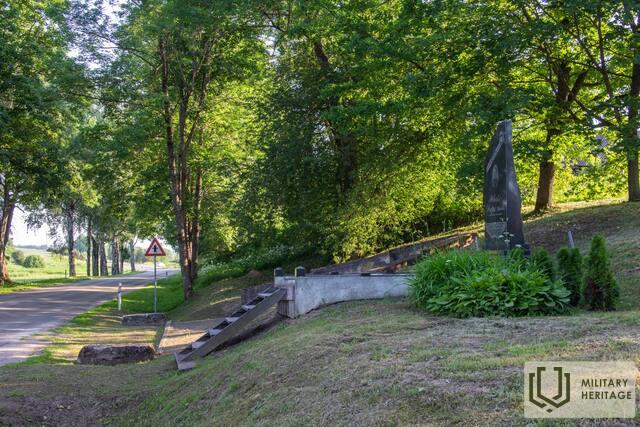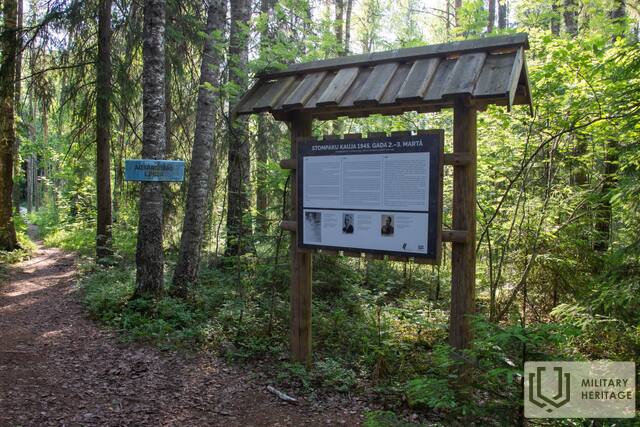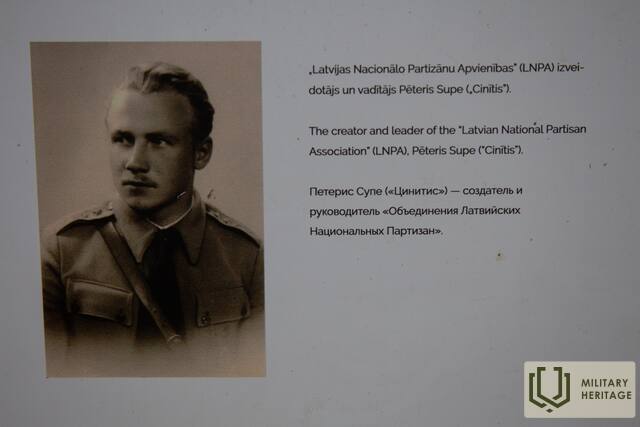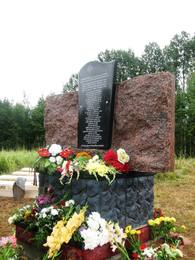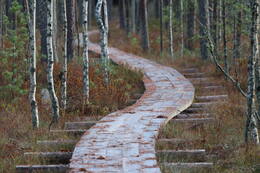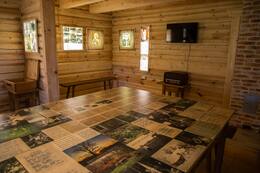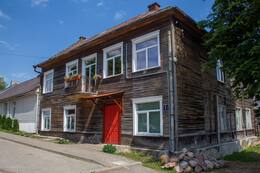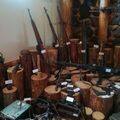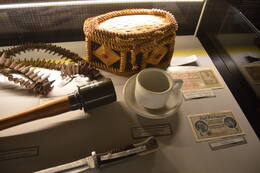Pēteris Supe - initiator of the establishment of the Latvian National Partisan Association
From 1944 to 1946, Pēteris Supe managed to unite the national partisan units scattered in the forests into an organized movement, which continued to fight against the occupation of Latvia in Abrene County for several years after World War II. Pēteris Supe, nicknamed “Cinītis”, was one of the most outstanding organizers and leaders of the national partisan movement in Northern Latgale.
Pēteris Supe was born in 1920 in the Abrene district of Purvmala parish in the young Dārzas house. As a child, he was active in the small-scale movement and was the only one in the entire district to receive the title of "Līdumnieks". At the age of 17, he graduated from the gymnasium in Viļaka, then studied at the Faculty of Agriculture of the University of Latvia in Jelgava and became a certified agronomist at the age of 20.
Contemporaries described him as a very enterprising, capable and nationally minded person, even to the point of fanaticism, with good orator and psychologist skills. During the German occupation, he was the chief agronomist of Abrene County. When the Soviet army approached Latgale and Vidzeme at the end of 1944, P. Supe went into exile to return to his native places as the commander of a German reconnaissance group, however, it should be emphasized that, being a true patriot, he did not want to serve either the German or the Russian Soviet side. The Germans prepared the former agronomist for battles behind enemy lines as part of the so-called “forest cats” units, but P. Supe, hoping for Western help in restoring Latvia’s independence, chose a different path. During one of the first reconnaissance missions on behalf of the Germans on the Abrene side, having noticed the large number of Latvians who had been drafted into the Red Army but had subsequently deserted, he requested by radio that the Germans send weapons by plane for the formation of armed groups, but was refused. The war was not over yet when, in the autumn of 1944, P. Supe decided to give up serving the Germans and start organizing a national resistance movement.
Peteris Supe was the initiator of the foundation of the Latvian National Partisan Association (LNPA - was able to operate until 1953), his deputy was a former student of the Faculty of Economics of the University of Latvia, Staņislavs Ločmelis (“Dūze”). The founding meeting took place on December 10, 1944, in the forest near the village of Stompaki. They had their own headquarters, propaganda, economic and counterintelligence departments, a court and even a newspaper. At the time of foundation, there were 123 men in it, but already in 1945, according to the Viļaka District Military Commissariat, there were 1,000 men and soon the organization had partisan groups in Viļaka, Alūksne, Valka, Gulbene, Cēsis and partly Madona districts under its control.
In early January 1945, LNPA partisans, on the orders of P. Supe, began to gather in the Stompaki swamps between Balvi and Viļakas, where they set up a camp on several swamp islands, which can without exaggeration be considered the largest partisan camp in the entire Baltic region. Its official partisan name was "Saliņu mītnes", but it was also popularly known as "New Berlin".
P. Supe's partisan activities were characterized by an uncompromising war, in which Soviet activists fighting the partisans were killed without hesitation. P. Supe's partisans also won the famous Battle of Stompaki in early March 1945, defending their well-equipped base on the islets of the Stompaki swamp. It became the largest battle in the entire history of the Latvian national partisan movement, in which 300 fighters participated on the partisan side, and more than 560 on the Soviet side. As a talented commander, he had every opportunity to gradually turn the national partisan war in Latvia from a struggle of individual units into an all-encompassing, well-led movement, if only Pēteris Supe had not been shot on April 1, 1946, by a Cheka agent sent into the partisan ranks, Jānis Klimkāns. P. Supe was killed during a partisan meeting in Jaungulbene parish, when traitor Jānis Klimkāns opened fire on P. Supe and his deputy Henriks Ausekls (Tāraud).
Latvian News, 2005,
Soviet occupation of Latvia, 1944 - end of the 1950s. Formation and activities of the Latvian National Partisan Association during the Stompak period
Related timeline
Related topics
Related objects
Monument to the participants of the resistance movement in Stompaki
Located 15 km from Balvi in the direction of Viļaka, on the right side of the road.
A memorial sign is visible.
A memorial to the participants of the resistance movement, dedicated to the memory of the national partisans of Pēteris Supe who fell in the battles of March 2 and 3, 1945, was unveiled on the side of the Balvu - Viļakas highway opposite the Stompaku swamp on August 11, 2011, on the Day of Remembrance of Latvian Freedom Fighters. At the end of July, a capsule with a message for future generations was embedded in the foundation of the monument. A document with the names of 28 national partisans who fell in the battles of March 2 and 3, 1945 is placed in the capsule.
"In February 1945, on the islands of the Stompaku swamp, which the people began to call the Stompaku swamp islets, 2 km from the Balvi - Viļaka highway, the largest national partisan camp in Latvia was established, where 360 people lived in 22 dugouts. Among them were some legionnaires who, when the legion division retreated, had remained at their father's house with all their weapons. In order to destroy the partisans, on March 2, 1945, soldiers from two Cheka battalions attacked the dugouts together with destroyers, who also had four mortars in their armament. The fighting lasted all day, the partisans resisted stubbornly, and the attackers suffered heavy losses, so that they were unable to take the camp and destroy the partisans. 28 residents of the Stompaku swamp had also fallen in the battle or died from serious injuries. The next night, the partisans broke through the camps with a battle "the siege and left undefeated" - this is what Zigfrīds Berķis, the chairman of the Commission for the Affairs of the National Resistance Movement Participants of the Awards Department, writes about the Battle of Stompak.
Monument to the commander of the North-Eastern national partisans Pēteris Supe - "Cinītis"
In honor of the memory of the national partisan commander Pēteris Supe, a monument dedicated to him was unveiled in Viļaka on May 28, 2005. It is located near the Viļaka Catholic Church, on the edge of the trenches dug during the war, where the Chekists buried the national partisans who were shot. Under the monument dedicated to P. Supe, a capsule with the names of 386 fallen national partisans, descriptions of battles and materials about the partisan commander is placed. The words are carved into the stone: "To you, Latvia, I remained faithful until my last breath."
The monument was designed by Pēteris Kravalis.
Nearby is a memorial to the Latvian freedom fighters who fell in Stompaku Forest and other battle sites and were murdered by the Chekists in 1944-1956.
On June 20, 2008, a granite plaque was unveiled on the right wall with the names of 55 fallen partisans arranged in three columns.
The monument was erected at the site where the communist occupation authorities had once exhibited the remains of murdered partisans to intimidate the rest of the population.
On the adjacent plaque are engraved words of gratitude to Pēteris Supe and a poem by Bronislava Martuževa:
"Get up, Peter Supe,
Soul, fight in the war!
Today is your blood sacrifice,
Risen among the people.
Go out and live forever
In the strength and vigor of youth,
It flutters, flutters, flutters
"In the rising flag!"
Trail and partisan memorial in Stompaki bog
During World War II, one of the largest national partisan camps in the Baltic states was situated in Stompaki Swamp. Today, the territory is included in the nature reserve “Stompaki swamp”. The settlement sites located on the islands in the swamp can be reached via a marked footpath.
In early 1945, about 350 to 360 people, including 40 to 50 women, lived at the camp of National Partisans in Stompaki Swamp. The camp consisted of 24 residential bunkers – buildings that were half-immersed into the ground and could accommodate 3–8 people. There was a bakery, a church bunker and three above-ground rails for horses. Partisans from the camp carried out attacks against officials of the occupation regime. On 2–3 March 1945, the Battle of Stompaki took place here – the largest battle in the history of Latvian national partisans. The 350–360 partisans in the camp were attacked by the 143rd Rifle Regiment of NKVD and local fighters of the so-called ‘istrebitel’ (eliminators) battalion – 483 men in total. The battle lasted for the entire duration of the day on 2 March. On the night of 3 March, the partisans managed to break out of the camp and retreat to their previous base camps. The battle resulted in 28 casualties among partisans, while the NKVD force lost 32 fighters.
Today, the site of the Stompaki camp is home to three restored bunkers – a church, a headquarters and a residential bunker – as well as 21 sites of former bunkers. Information boards about the camp and the battle have been installed at the site. Guided tours can be booked.
Broņislava Martuževa poetry barn
The Broņislava Martuževa Museum is situated on the site of the poet’s childhood home in Indrāni parish, Madona municipality. The museum’s exhibit is located in a renovated barn featuring voice and video evidence from the National Resistance Movement and the work of the poet in publishing an underground magazine, as well as composing poetry and songs for national partisans. Broņislava Martuževa was involved with the resistance movement since its inception. Lazdiņas, Martuževa’s home which has not survived, also served as a place of refuge for Pēteris Supe, Head of the Latvian National Partisan Association, and his comrades-in-arms. The poet spent five years hiding in the basement of her home, meeting with partisans, writing poetry (including work dedicated to partisans Pēteris Supe, Vilis Toms, Smilga Group, Laivenieks, Salns, Celmiņš, Bruno Dundurs and others), as well as writing songs and teaching them to partisans. Now, her songs are sung by the ‘Baltie lāči’ group (literally: ‘White Bears’). In 1950, the ‘Dzimtene’ magazine (literally: ‘Motherland’) was published underground together with Vilis Toms. The poet transcribed 11 issues of the magazine, 10 copies each, by hand. The poet, her brother, sister, mother and Vilis Toms were arrested in 1951. Bronislava Martuževa returned from Siberia in 1956. Recognised locally and nationally, the poetry barn is visited by both local residents and guests of the municipality. Learning about the poet’s life gives you the opportunity to discover the fate of Latvia.
Private Exhibition “Abrene Rooms”
The Private exhibition “Abrene Rooms” is located in the town of Viļaka, in a building with a diverse history. Initially, the building was located on the old Marienhausen market square, later it housed apartments, offices and various shops, and during World War II, it was the Latvian self-defence headquarters, the Gestapo and also the Cheka. Several exhibitions reveal diverse events and historical periods in the town of Viļaka and its nearest vicinity covering the time period from 1920 to 1960 when Viļaka was part of Jaunlatgale, later Abrene, district. The exhibit features items from the national partisan camp in Stompaki Swamp, which are related to the national partisan movement in the Latgale region. Documents and photos associated with the War of Independence are also on display. The latest exhibition is dedicated to the once-famous motocross track “Baltais briedis”.
Museum of the National Resistance Movement in Renda
The museum is located a few kilometres from the centre of Renda parish. The exhibit tells about the 50-year-long resistance movement in Latvia: resistance to the first Soviet occupation, resistance to the Nazi German occupation, and the armed and non-violent resistance to the Soviet occupation. The exhibit is located in two buildings. The first building houses evidence of the first Soviet occupation and German occupation. The exhibit showcases a restored barn building where the focus lies on the National Partisan War. Between the two buildings there is a bunker with an authentic layout and trenches used by soldiers. Located near the museum in Renda, excavations, blindages and an obstacle course serve as a training ground for youth guards and anyone interested. Visits must be booked in advance.
One of the largest battles of the national partisans, called the Āpūznieki Battle, took place in January 1946 not far from here. The battle saw the Kabile National Partisan Group overpower much larger forces of the occupying power. Featuring information stands, the battle site is now home to a rest area.
Vilaka Museum
Viļaka Museum operates in two buildings – the Catholic parish house, built in 1913, which is an important cultural heritage object of the town, and the other building of the museum – a former monastery of Capuchin monks, whose cellars are closely related to the national partisan movement in Stompaki and the Soviet Cheka. According to the memories of the locals, people were held and tortured in these cellars. The old museum building houses several exhibitions, with one of the exhibitions dedicated to the 1920 freedom battles in Northern Latgale, and the second – to the events of the Second World War – the Jewish Holocaust in Viļaka and information about the families who were shot. More information about each family is available based on their street address.
The exhibition is supplemented by information about the national partisan movement in Stompaki – various testimonies, photographs and objects. Visitors can learn about the military heritage sites in and around Viļaka, such as the Freedom Fighters Monument in Jaškova, which was demolished during the Soviet era and restored in 1990, and the stele dedicated to the recipients of the Order of Lāčplēsis. The sound of World War II aircraft is incorporated into the exhibition of the museum, as the German Luftwaffe airfield was located near Viļaka. The museum offers an opportunity to see some memories of the Second World War events in Viļaka, as well as to receive information about the German prisoner-of-war camp in Rači.




